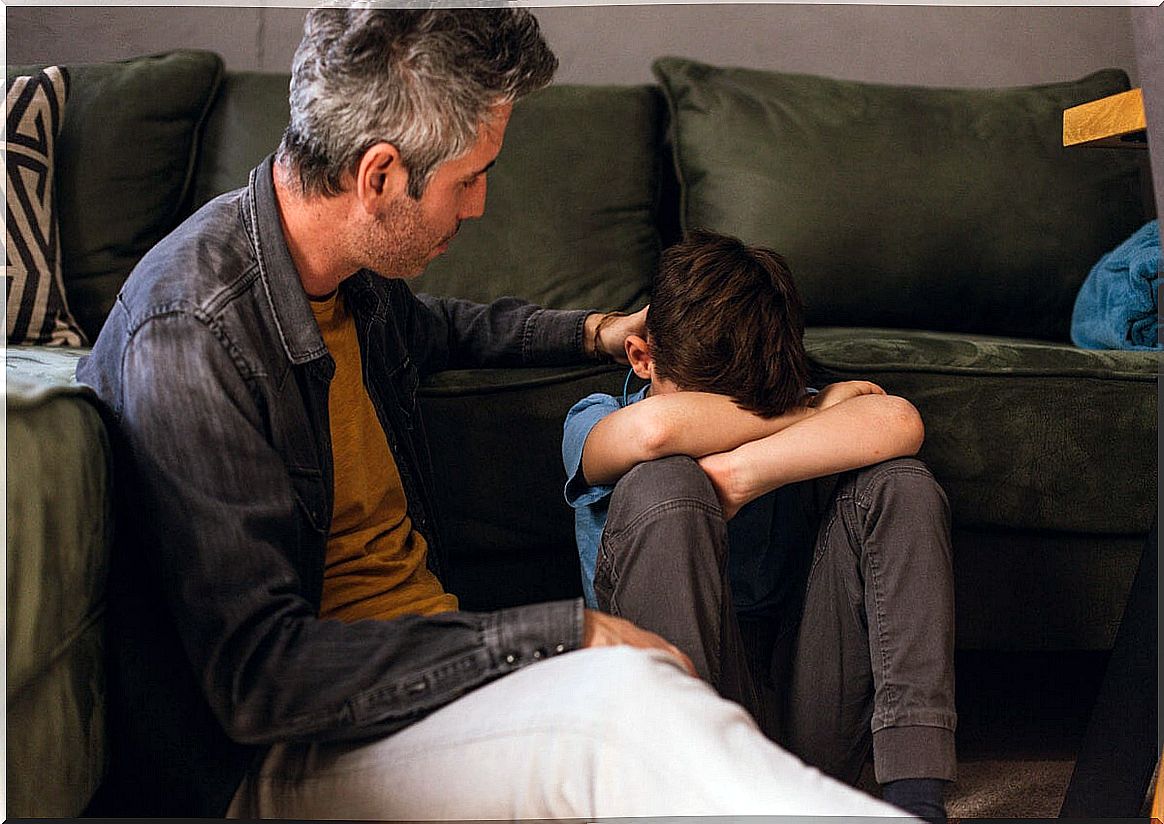How To Explain Death To Children

How to explain death to children? Before answering, it is worth mentioning here another concept: grief or the way to experience a loss or death. Grief is a complex process that we face when we lose a loved one, but also when we face a breakup, lose a job, acquire a disability, etc. It is a process of reorganization and restructuring of reality that will allow us to adapt to the new life that this loss leaves us.
In this article we will answer the question of how to explain death to children through the advice and guidelines of the Catalan Pediatric Society together with the Parc Taulí de Sabadell . As we will see, the guidelines vary slightly depending on age and this has a lot to do with the evolution of the child and with the concept of death that occurs in each evolutionary period.
In the first place, we will explain in what phase of development children are according to their age group (at a psychological, social, language, autonomy level …), to later address the question of how they understand death at their age and how we can explain them the death of a loved one. These previous points will be essential to understand why we should use specific language and guidelines and not others.

Early childhood
Early childhood encompasses the period of life from birth to 2 years. At these ages, the children’s world revolves around the routines of daily life, and contact with caregivers is essential.
By age 2, language is in full swing, and children can understand and speak words related to their everyday lives. They can feel and express basic emotions, such as pleasure or anger, through their behavior.
How is grief at this age? At 2 years death is still not understood. Logically, if the deceased is the main caregiver, this will affect the child, even if they cannot understand what is happening. Therefore, it will be of great importance to preserve the child’s day-to-day routines as much as possible. It will be important that the day-to-day care continues to be done by the main figure, if possible.
In addition, we must take into account here the very intense emotional expressions on the part of the adult can distress the child. In this sense, up to 2 years, children express their emotions with behavior and not through language.
As we can see, grief in early childhood is very particular, but it should be noted here that the important thing will be that the child does not stop feeling cared for or lose contact with other figures of reference.
How do we do it?
Even if understanding is very limited in early childhood, the news will need to be communicated. How? As long as the child has language, it will be important to use simple and short words or phrases, and to convey the news clearly and calmly, offering a safe environment. The news must be communicated by the main caregiver, in a comfortable and familiar place for the child.
When should it be done? When the adult feels that they have their own emotions under control; After delivering the news, there should be the possibility of the child returning to his usual game or routine. Returning to normality is key at this stage.
3-5 years (preschool age)
How to explain death to children between 3 and 5 years old? First of all, let’s see what their development is like at those ages. Between 3 and 5 years old, children are usually restless and curious, and they begin to gain autonomy (in addition to claiming it). Fears and fantasy may begin to appear. The language begins to consolidate.
On a mental level, their thinking is egocentric, which means that they understand the world from themselves and their own experiences. On the other hand, when it comes to interpreting events, his thinking here is not very flexible and a bit magical.
How is the duel in this phase? According to experts, children here do not understand that death is universal , and that therefore we all die. They have a concept of reversible death (that is, it is not forever). Their magical thinking causes them to mistake a thought for a fact (for example, they may think that “if I think about death, it will happen”).
How do we do it?
How to explain death to children of these ages? According to the Catalan Society of Pediatrics , we must offer a concrete and real explanation, based on their daily life and their experience. The explanation will be made by the main caregiver when the child is calm, in a safe place for him.
The news should be communicated as soon as possible; no need to wait. Finally, we must offer a space for the child to resolve their doubts if they have them.
6-9 years
At this age, autonomy is booming and the language is already developed. Children speak and understand increasingly abstract and symbolic concepts. In addition, their thinking is more flexible and reflective, and they are very curious. Finally, most are able to differentiate reality from fantasy.
In relation to death, this is where they begin to understand that death has no return, that is, that it is irreversible. They also understand that the body stops working when we die. They do not yet integrate the idea of their own death, but they worry that someone close or dear may die.
How do we do it?
It is essential that we do not mislead them or use metaphors, as this can frustrate them and generate more doubts and confusion. It is normal at this stage for them to seek many explanations and therefore we must be available to answer their questions frankly and clearly.
The communication of the news must be through a clear, real and brief explanation and we should not wait long to transmit it.
10-13 years (preadolescence)
At these ages the changes of puberty begin; the command of language is already total and their thinking allows them to reason logically about abstract situations. They can identify and express complex emotions (such as disappointment), and also understand that different emotions can coexist simultaneously.
In preadolescence, the concept of death has already been fully developed, and, in relation to it, they understand the following:
- Death is irreversible.
- The body stops working.
- We all die (including themselves).
- They are afraid of loss.
How do we do it?
How do you explain death to preteens? As in previous ages, we will do it clearly, briefly and sincerely.
We will find an intimate and quiet place to do it, and we will allow the adolescent to express their emotions and to communicate their doubts or questions. This way, we will make it easier for you to ask the questions you need and let you vent.

Adolescence
Finally, we enter adolescence, a stage characterized by changes in all senses. Most adolescents begin a “struggle” for their independence, on which in many cases they gradually shape their self-concept, as well as a more accurate image of their environment. This is why grief in adolescence is different than in childhood or adulthood.
It is a delicate stage, where there will be moments of special vulnerability; The losses here are usually very significant – they have already had time to forge a relationship with the deceased person; on the other hand, they are able to understand what death means.
What will the duel be like? It will be more or less intense depending on the degree of intimacy and connection with the deceased person, the circumstances of death, the possibility or not of saying goodbye …
How do we do it?
In this especially sensitive stage, we must explain the final death and the reason for it carefully.
Ideally, the news should be communicated by the person closest to the adolescent, in an intimate place and as soon as possible. We must do it honestly and concisely, respecting your space and making ourselves available to resolve any doubts or questions that may arise.









